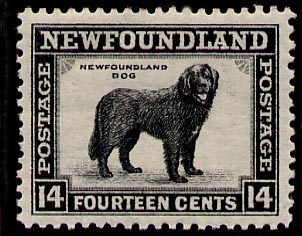
Newfoundland
History
History

 |
Newfoundland History |
 |
Count Ten
[This document was written in 1949. For the full citation, see the end of the text.
Birch billets crackled cheerily in the fireplace, and the lights of a crystal chandelier sparkled on the gilt ceiling. In Newfoundland 's Government House, in the fogbound capital of St. John's, 100 Newfoundlanders had gathered to witness the official entry of Newfoundland into the Dominion of Canada.
The ritual of confederation with Canada went off smoothly. The island's black-robed chief justice, Sir Edward Emerson, swore in Sir Albert Walsh, Ottawa 's choice as lieutenant governor. Sir Albert named Joseph Smallwood, longtime campaigner for confederation, as premier and approved Smallwood's nine-member cabinet. (In Ottawa, Prime Minister Louis St. Laurent named Newfoundland Lawyer Gordon Bradley to the Dominion cabinet as Secretary of State. Canada 's tenth province had an interim government to serve until the election to be held in May.)Half-Staff. Outside Government House, and in the fishing villages spotted along the jagged coast, the same sober smoothness marked the change-over. Many of those who had opposed confederation felt no better about it than before. But the protests which once broke old friendships or split families down the middle were silent protests now. St. John's Merchant Gordon Winter (whose son Gordon was named minister of finance in the new provincial cabinet) lowered the flag to half-staff at his mansion on Rennie's Mill Road. Lawyer Jack Higgins wore a black tie, hung crepe on his door and pulled down the shades. A scheme to hold a funeral procession down the main streets got to the stage where a truck and a long black box were ready. Then the schemers decided not to go through with their prank.The backers of confederation, knowing that public gloating would only stir needless bitterness, kept calm. The closest thing to bunting in downtown St. John's was a red warning flag raised by a city workman digging, as usual, in the street.Half-Fare. Newfoundlanders who had voted for union with Canada could find other things to rejoice in besides the actual event of confederation. With Canadian citizenship had come the end of Newfoundland 's high duties on imports from Canada . Food prices were down 18% to 25%. Clothes were cheaper. (But some U.S. imports, such as cars and fruit juices, were dearer.) Passenger fares on the Newfoundland Railway, taken over by the government-owned Canadian National Railways System, were cut in half. Freight rates were trimmed and a new steamship service to Canada announced. Best of all, registrations would start now for such Canadian innovations as old-age pensions and allowances for widows and the blind. Monthly baby bonuses for every Newfoundland child were already on the way.Source: "Count Ten", Time (Canadian edition), April 11, 1949 , p. 19.
Return to Canadian Views of Newfoundland's Entrance into Confederation
© 2004 Claude Bélanger, Marianopolis College |